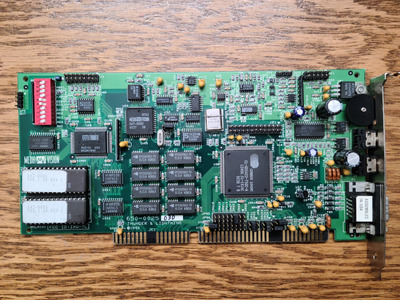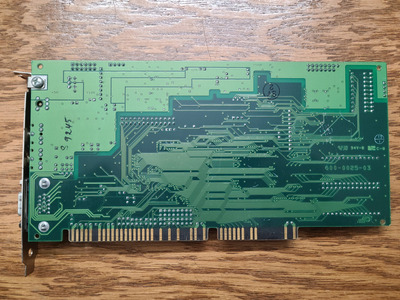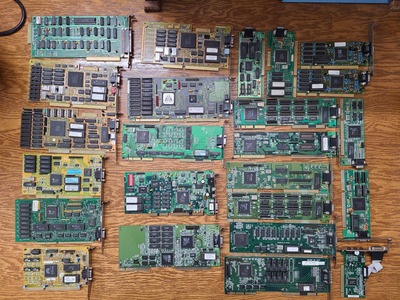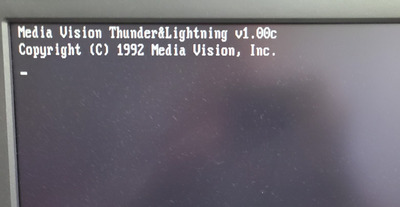BitWrangler wrote on 2024-04-18, 22:15:
devius wrote on 2024-04-18, 20:26:
Ozzuneoj wrote on 2024-04-17, 22:40:
I want someone to figure it out though. The detective work was actually a lot of fun. 😁
Media Vision Thunder and Lightning. A video and sound card in one. I couldn't find the ad that you mentioned, just a schematic of the card on VCFED and it matches your photo.
Heavy Metal VGA ad https://books.google.ca/books?id=gasgHhfj-RAC … ghtning&f=false
Brilliant Deals from Media Vision Ad (tiny pic) https://books.google.ca/books?id=rjsEAAAAMBAJ … ghtning&f=false
Yep! Those are some of the only references I could find, aside from Cloudschatze's post here.
I was about 80% sure it was a Thunder and Lightning (based on the similarities to the Thunderboard and the fact that it looked like a VGA port) until I saw that schematic of the card, that bumped it up to a solid 97% certainty. It's never 100% though... you never know how many variants of cards these crazy people made back in the day. 😁
Cloudschatze wrote on 2024-04-18, 21:12:
Ozzuneoj wrote on 2024-04-17, 22:40:
As it is, even if it's only the back 3 inches of the card and the rest is torn off I believe it will still be the only photos of that much of the card since it was released. Granted, there may be pictures on a non-english speaking site and they just never come up in Google searches.
Re: A gallery of strange sound devices
Awesome! So you did find one! That post doesn't come up in searches because the name isn't actually in text anywhere in the thread.
Anyway, I got the lot today and I am pleased to say that it is in fact a Thunder and Lightning.
Pics are obviously after some cleaning and TLC, but it was overall in good shape. Only major cosmetic issue is that the chrome plating on the back plate is bubbling up in several places, which is not something I can say I've run into with cards in such good condition. I will probably try to clean that up and re-coat it at some point.
And... oh my... there were so many more video cards in the lot than I expected.
I thought there would only be 6 or 8 of them from the pictures I saw, and I definitely did not see the ATI WINTURBO (Mach64 GX 2MB VLB) card. It has a couple badly bent legs on the Mach64 chip, but they appear to be grounds. I still separated the pins very carefully and resoldered them to the pads, but if I beep out the first two legs on each corner of the chip they are almost all grounds. I compared this to an ISA Mach64 GX and it was the same on that one, so even if they had been broken off it'd likely have still worked fine.
Other neat cards in the lot:
Orchid Fahrenheit 1280 Plus VLB (S3 805 I believe), Diamond Speedstar Pro VLB (CL-GD5428), STB Powergraph S3 805 VLB, pile of Trident VLB and ISA, No less than three Acumos AVGA1 ISA cards, Evershine ET4000AX (unusual brand with neat screen-printed logo, PLUS it has someone's writing in sharpie on the back "Jen 11-10-92"... so cool!), Cardinal Technologies ET4000AX, OAK OTI-087 ISA, and several others.
Also got a pile of other misc stuff that wasn't really useful (old Token Ring cards and such), and a possibly-usable Asus P5QL-M (CM5571) micro-atx Socket 775 board with one broken cap.
All in all, I think it was a good purchase (understatement)... but there's a fair amount of work to do here in fixing things, unbending pins (already done a bit) and testing. Also, lots of tantalums to roll the dice on.
I will probably make a thread about the Thunder and Lightning some time. 😀
Now for some blitting from the back buffer.



